Home » Construction Blogs (Page 6)
Category Archives: Construction Blogs
Even Tighter Supply Coming? Deere Workers Strike For the First Time Since 1986
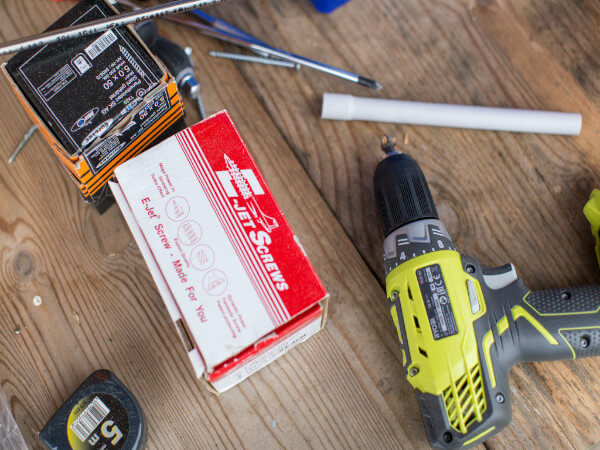
The industry’s inventory woes may have gotten even more pronounced as Deere & Company’s 10,000 UAW workers declared a strike at midnight Oct. 14th.
It is the first major strike at the company since 1986, says The Courier, based in Waterloo, Iowa, where Deere has several plants including its agricultural tractor and engine works. About 90% of UAW members rejected Deere’s latest offer on Oct. 10th. (UAW provided its members with outlined contract changes on Oct. 7th, shown here.) The 1986 strike lasted more than 5 months.
“Our members at John Deere strike for the ability to earn a decent living, retire with dignity and establish fair work rules,” says Chuck Browning, vice president and director of the International Union, United Automobile, Aerospace and Agricultural Implement Workers of America’s (UAW) Agricultural Implement Department. “We stay committed to bargaining until our members’ goals are achieved.”
“John Deere is committed to a favorable outcome for our employees, our communities and everyone involved,” says Brad Morris, Deere’s vice president for labor relations. “We are determined to reach an agreement with the UAW that would put every employee in a better economic position and continue to make them the highest paid employees in the agriculture and construction industries.”
Morris adds: “We will keep working day and night to understand our employees’ priorities and resolve this strike, while also keeping our operations running for the benefit of all those we serve.”
good time to strike?
Unions know they are in a good position to press for favorable changes in today’s tight labor market and in the face of increasing demand.
In its Q3 earnings report, John Stone, president of Deere’s Construction & Forestry Division said, “Demand for earthmoving and compact construction equipment will exceed our production for the year, resulting in low inventory levels as we exit the fiscal year,”
UAW President Ray Curry notes that “UAW John Deere members have worked through the pandemic after the company deemed them essential, to produce the equipment that feeds America, builds America and powers the American economy. These essential UAW workers are showing us all that through the power of a strong united union voice on the picket line they can make a difference for working families here and throughout the country.”
Picket lines have been set up outside Deere plants in Iowa, Illinois and Kansas. Deere says it has activated its “Customer Service Continuation Plan,” in which “employees and others will be entering our factories daily to keep our operations running. Our immediate concern is meeting the needs of our customers, who work in time-sensitive and critical industries such as agriculture and construction.”
The Courier says Deere’s six-year offer would have raised wages by 20% over the life of the contract and also increased some benefits. The Dubuque Telegraph-Herald, where the company’s massive Dubuque Works is located, reported that Deere’s offer would have raised a typical production employees salary from $33 an hour to nearly $40 an hour over the six-year contract.
Other OEMs likely are paying close attention to strike outcome. CNH Industrial and UAW negotiated their current six-year agreement in 2016. The current Caterpillar/UAW contract runs through 2023.
Did you miss our previous article…
https://constructionosa.org/?p=563
JCB Unveils Its Tallest Telehandler, the Rotating 512-83R
JCB is going bigger and taller with its new eight-story-high rotating telehandler, the 512-83R, which it calls three machines in one.
JCB says it can also serve as a crane or be equipped as an aerial work platform.
The telehandler has a max lift height of 83 feet and a max lift capacity of 12,000 pounds.
The company designed the machine for the changing jobsite in which larger loads need to be lifted to greater heights. JCB has modular home and building construction in mind for the 512-83R, but also says it can be used for any construction site dealing with suspended loads. It is also designed for the rental market, with simple, intuitive controls, and can be used for infrastructure projects, such as bridge work, or in urban areas with little space.
“It’s perfect for lifting and placing materials, panels and modular components at height in a very safe way and in a very productive manner,” said Tim Burnhope, JCB chief innovation and growth officer.
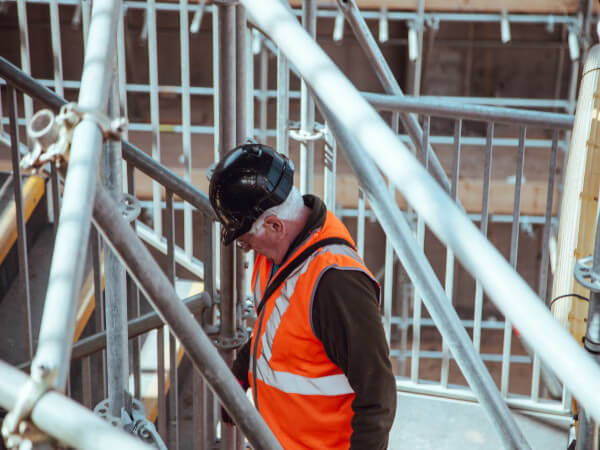
The JCB 512-83R rotating telehandler can also serve as an aerial work platform.JCBThe telehandler delivers continuous 360-degree rotation and is designed for fast setup, as its outriggsers can be automatically extended in 26 seconds and retracted. “Unlike the mobile crane, the [512-83R] can be set up on the site rapidly with outriggers that can be deployed, stored and leveled at the touch of a button,” Burnhope said during the product’s online unveiling.
The telehandler can also be operated by remote control.
Available attachments include pallet forks, rotating forks, winches, a lifting hook and a light-duty bucket. The attachments use radio-frequency identification, or RFID, so the correct load chart for the tool automatically pops up on the telehandler’s 7-inch screen.
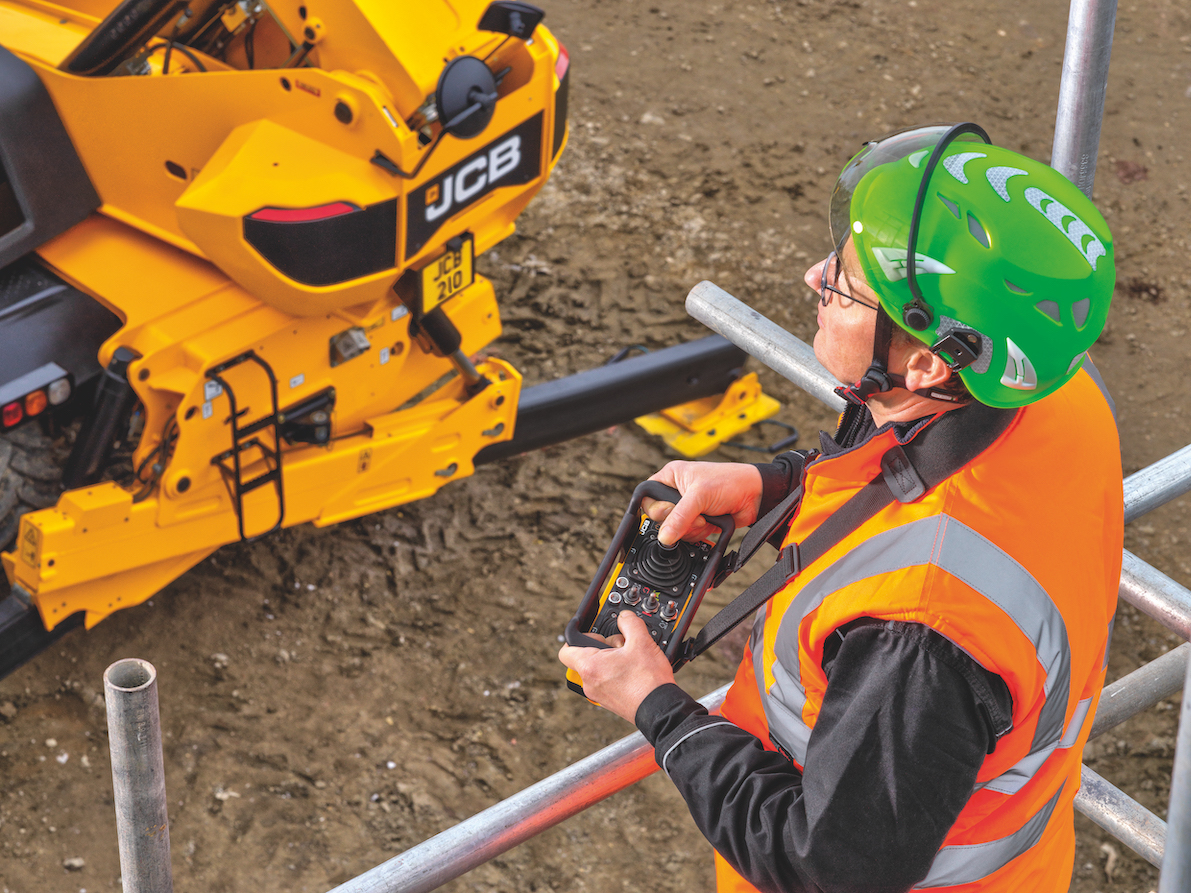
The JCB 512-83R rotating telehandler can be operated by remote control.JCBThe four-section boom with one telescopic cylinder has a low profile for better operator visibility. A camera can be mounted to its head, so the operator can see better when placing loads at height. The boom can lift up to 4,400 pounds to max height and up to 660 pounds at full horizontal reach, which is 70 feet.
The telehandler runs on a 145-horsepower JCB EcoMax diesel engine and a two-speed hydrostatic transmission. It can travel up to 25 mph and has three steering modes. Turning radius is under 10 feet. Four-wheel drive is available for off-road work.
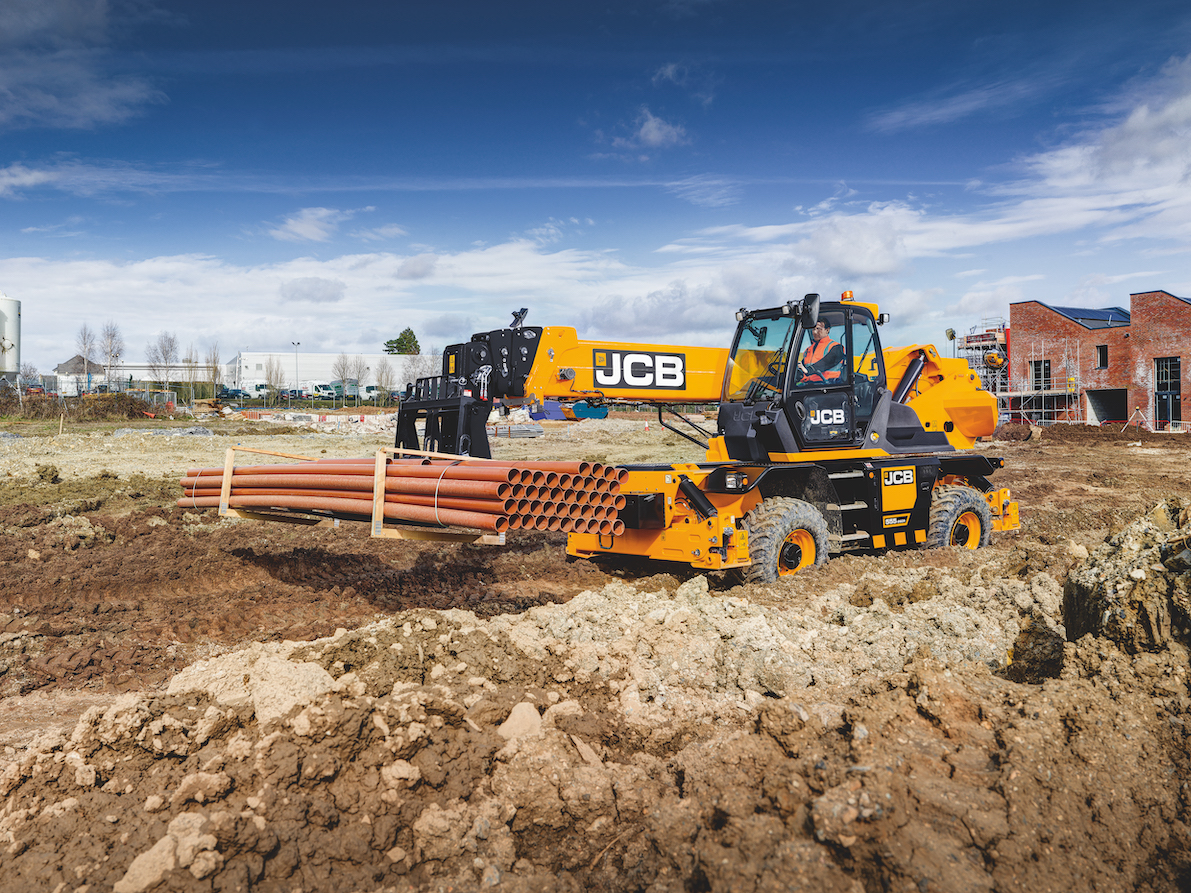
JCB 512-83R rotating telehandlerJCBThe engine and the machine’s service points have been placed at ground level for easy access. Service intervals are at 500 hours. Seating options are available for the cab. Work lights and camera kits are optional. A five-year subscription to JCB LiveLink telematics is standard.
JCB says it is currently taking orders for the 512-83R.

JCB 512-83R rotating telehandlerJCB
Did you miss our previous article…
https://constructionosa.org/?p=554
Prinoth Purchases Jarraff Industries, Expands Reach into Right-of-Way Maintenance Market
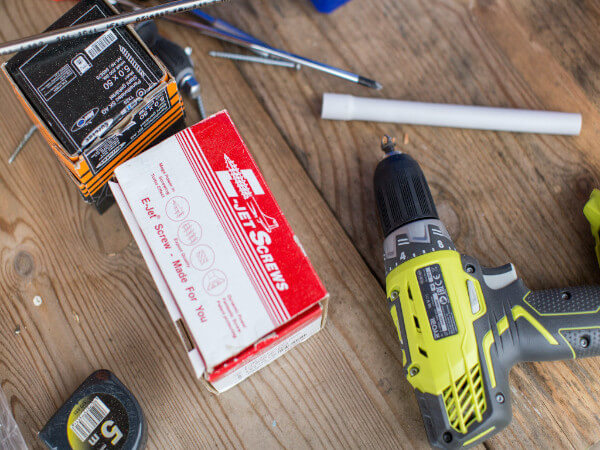
Prinoth has purchased 100 percent of the capital stock of Jarraff Industries, a Minnesota-based manufacturer of right-of-way maintenance equipment. The acquisition will further increase Prinoth’s presence in the U.S. and expand its offering in the specialized off-road equipment segment. The agreement was effective October 1.
“I am very proud of the legacy we have established and nurtured over the past 42 years,” said Heidi Boyum, president, Jarraff Industries. As a family-run and -owned business, I view today’s transaction as an opportunity to ensure that the business, customers, employees, and the community we are in continue growing while joining an even larger family.”
Boyum will continue to work as a strategic advisor to Jarraff Industries and PRINOTH. Jarraff’s COO Steve VanRoekel will remain as the Chief Operating Officer.
Prinoth Group President Klaus Tonhäuser said Prinoth was interested in Jarraff’s products for utilities right of way and maintenance, a segment that is in high demand.
“Jarraff’s specialized product portfolio and strong presence in these critical market segments will provide our customers access to industry-leading products backed by our brand, distribution, and manufacturing experience,” Tonhäuser said in a news release.
PRINOTH is a manufacturer of snow groomers, tracked vehicles and vegetation management vehicles and equipment.
Did you miss our previous article…
https://constructionosa.org/?p=543
From Beaches to Bases, This N.C. Contractor Loves to Move Dirt
Two things you quickly learn about Matt Mitchell is that he loves Sneads Ferry, North Carolina, where he has lived all his life.
And he loves dirt.
“A grown man might be a grown man, but somewhere deep down he’s still got a little boy in him,” he says. “And they all like to play with little toys and dirt.”
“I love the challenges,” he adds, when explaining why he loves being a contractor. “I really like doing the things they say you can’t do, or can’t be done.”
That attitude has led his business, C.M. Mitchell Construction Company, to grow to more than 50 employees, 35 pieces of equipment and annual revenues of $10 million to $13 million. For that and more, Matt is one of Equipment World’s 2020 Contractor of the Year Award finalists.
Hard lessons
Matt learned about hard work, honesty and integrity from his father, a retired Marine who had been stationed at nearby Camp Lejeune. His father and mother ran a little country store and tackle shop on Vultures Landing.
“Son, your word is all you’ve got,” his dad would tell him.
He helped instill a strong work ethic in Matt.
“As a Marine, he taught us how to work, and he taught us what our backs are made for,” Matt recalls. “When I was growing up, it was all back-breaking work. He wasn’t taking any shortcuts.”
They would also dig the graves for local residents who passed away. It was a free service his father started, and Mitchell Construction continues it to this day.
As a teen, Matt worked for a family friend who owned a construction company. Matt would run a dozer and excavator and drive a dump truck. He worked for him for about 10 years. Then the owner had a heart attack and sold the business.
Matt bought a commercial fishing boat, but that new career lasted only about 10 weeks. “I was there one day fishing, and I just said, ‘I’m done with this. I’m going back in the dirt business. I’m going to do it myself.’”
That was in 1994. He used the money from selling the boat to buy a farm tractor and a trailer. His parents co-signed for a $25,000 loan. Matt used that money to buy a 1974 dump truck, a backhoe and a dozer.
His brother Mel drove the dump truck, and Matt moved dirt. They cleared lots, put in driveway culverts, whatever people needed done.
He did a lot of subcontracting work and landed his first big job at Camp Lejeune. During that job, he met Theresa who was working for the general contractor on the project. She helped him with the paperwork, and he told her if she ever decided to leave her job, he wanted her to come work for him.
“I don’t think you can afford me,” she told him.
But in time he won her over, and they’ve been keeping C.M. Mitchell growing ever since.
With her as chief financial officer and Matt running the construction business, they’ve landed many multimillion dollar projects over the years.
Landing big jobs
The company won its first job over $1 million by traveling to Virginia to meet with a large construction firm. The company was planning a complicated project involving a 100-square-foot amphibious boat ramp at Camp Lejuene. Matt convinced them he could handle the work.
“We were so excited,” recalls Theresa. “We had a $2 million job.”

With Matt running the construction operations and Theresa running the office, the couple have built a successful construction firm in Sneads Ferry, N.C.Equipment WorldThey began hiring more employees. Along with the boat ramp, the project involved building docks, ponds and a parking lot, as well as installing sewer and drainage lines.
The work was going well, but the finances ran into trouble. Mitchell wasn’t getting paid by the contractor on the project, and the company needed the money to pay off the project’s financing.
The contractor eventually paid the $800,000 he owed Mitchell. But the stress of trying to collect it had left Matt and Theresa rethinking their business. “One minute you’re up there, and the next minute you could lose your home if somebody doesn’t pay you,” says Theresa. The couple were also raising their three sons at the time.
After another episode in which they had to take a contractor to court to get paid, they decided to reorganize and trim down. “We’re going to stop going after the big work,” she says. “Let’s gain control of what we’re doing.”
They became more cautious about the contractors they subbed for. They landed work with large contractors, which brought them multiple projects. And they paid on time.
“We were able to pick and choose who we worked for,” Theresa says. “We could do some background on them and make sure that the people we were trying to be a subcontractor for were of good character.”
Then the September 11 terrorist attacks caused the local construction economy to tank. Mitchell was able make it through with projects on military bases. Government projects also got them through the Great Recession.
In 2011, the company had grown to 40 or so employees. And Matt decided to scale back to about 25 workers. He started turning some of his attention toward other ventures. He opened a restaurant and a boat store. He bought two shrimp boats. He bought and renovated boats and sold them. Then he spent about five years building his own boat – all while still running his construction firm.
“I don’t know why this was going on,” says Theresa. She calls it his “nostalgia tour.”
Matt just laughs.
“But one thing about my husband,” she adds. “He has no hobbies. Everything he does has to generate revenue.”
Ramping back up
Meanwhile, the construction firm was doing well, holding steady. And eventually, many of the side ventures drifted away.
“Our real passion that really drives us is here,” Theresa says, referring to Mitchell Construction.
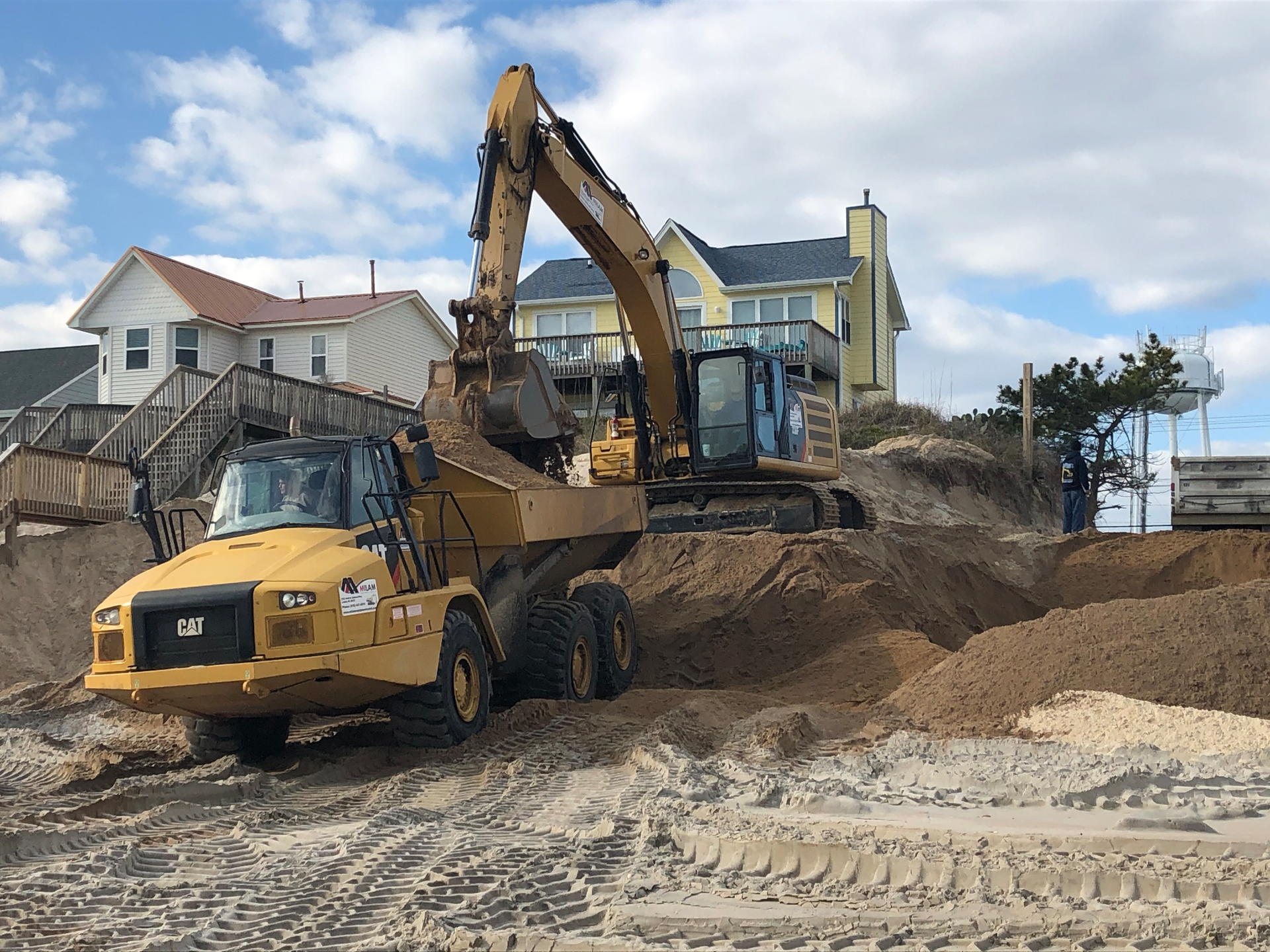
Dump trucks haul in sand and an excavator fills dump trucks on the beach to rebuild dunes in North Carolina eroded by Hurricane Florence.Equipment WorldTwo of their sons love construction work, and the couple want the company to be available for them.
The company has grown back to 50 employees. It updated its accounting software, switched to project management software and began using iPads on jobsites. They also increased pay and benefits to attract and keep good employees.
Along with the changes, the company has continued to benefit from Matt’s work ethic and quality standards.
“A lot of people really respect Matt,” Theresa says. “A lot of his employees respect him because he’s the type of guy who is out there in the ditch with them.”
The company also maintains a family atmosphere. Theresa cooks lunch each day at the office for employees. A number of the employees are actual family members.
Their oldest son, Mark, has worked with them since 2000 and recently branched out on his own to start a concrete business. Their youngest son, Matthew, is the company’s asphalt division supervisor. Matt’s two brothers and Theresa’s sisters also work for the company.
“We’ve always been a real tightknit family,” Matt says.
Moving dirt
One of Mitchell’s latest projects has been rebuilding the sand dunes on Surf City and North Topsail beaches, which had eroded during Hurricane Florence.
The projects involved hauling in and placing more than 200,000 cubic yards of sand. Mitchell dump trucks came and went hauling sand from miles away, while excavators and dozers moved like clockwork to build the dunes.
“I can move dirt, and I love moving dirt,” Matt says.
Surf City Town Clerk Stephanie Hobbs agrees.
“They’re a great company,” she says. “I would give them the highest rating you have. They show up in a timely manner and get the job done on time and on budget.”
Matt attributes his success to hard work and recommends the same for new contractors.
“You’ve got to work hard. You’ve got to put your time in,” he says. “When everybody else is off having fun, you’ve got to go make a deal with somebody.”
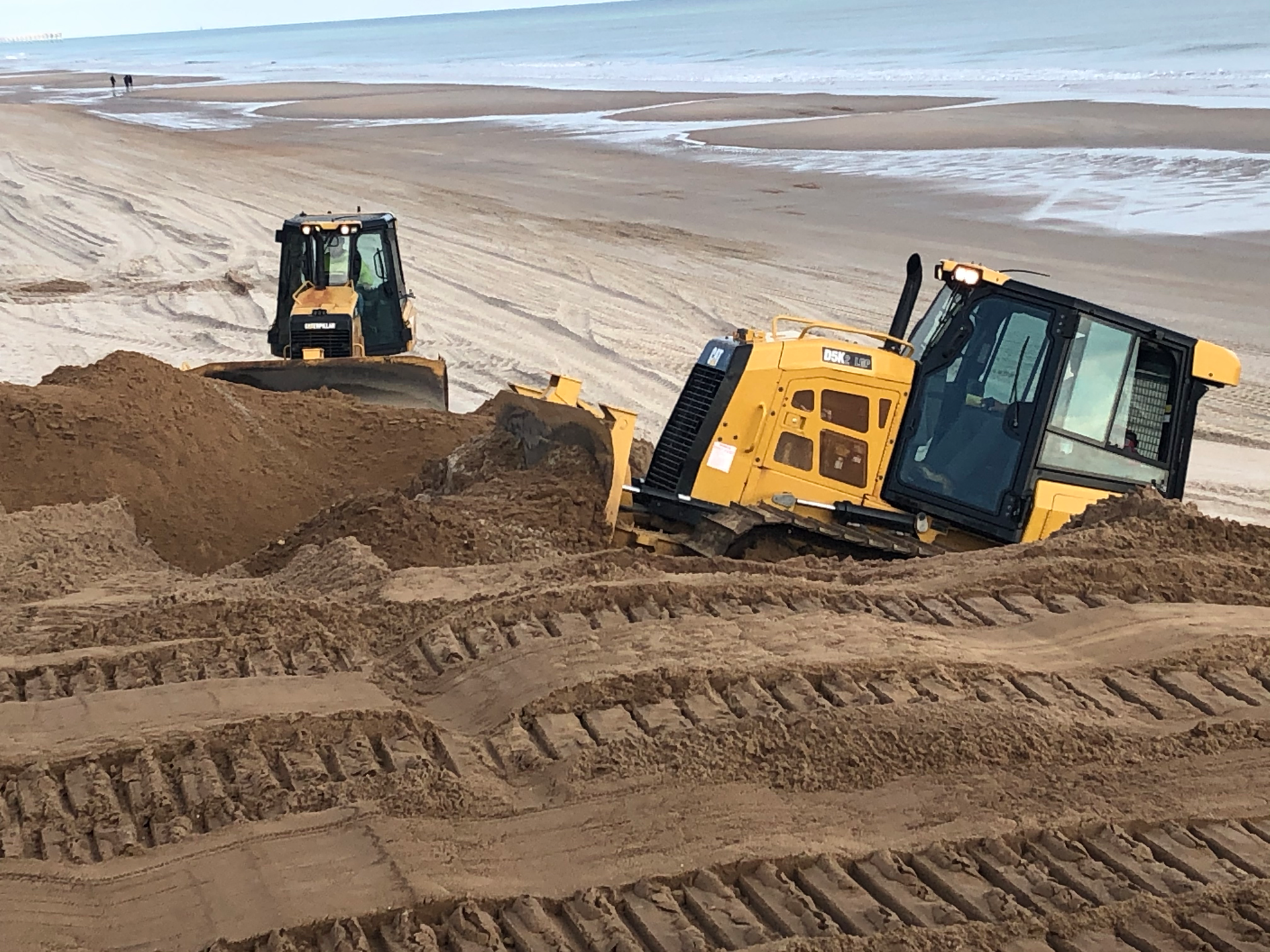
C.M. Mitchell Construction dozers rebuild dunes damaged by Hurricane Florence.Equipment World
Did you miss our previous article…
https://constructionosa.org/?p=528
Where Do Things Stand with the Infrastructure Bill and Transportation Funding?

Since the Senate’s passage of a $1.2 trillion infrastructure bill in August, negotiations have taken a turn for the partisan worse in the House.
What once seemed to be a bipartisan effort to enact the largest spending increase for infrastructure in decades has devolved into last-ditch efforts to just keep current transportation funding levels intact – but only for one more month – and to prevent the entire federal government from shutting down, at least until December 3.
What happened?
The Infrastructure Investment & Jobs Act passed the Senate August 10 in a bipartisan 69-30 vote. It includes $550 billion in new funding over five years as well as reauthorizes increased transportation funding through 2026.
Though the bill had bipartisan support in the Senate, House Democrats wanted the bill paired with a $3.5 billion package of Biden administration initiatives called the Build Back Better Plan. The plan focuses on such measures as pre-kindergarten, paid community college tuition, expansion of Medicare and addressing climate change.
House Democrats demanded that the Senate also pass that bill before it would take up the infrastructure legislation. In a party-line vote, the Senate set up the bill for a process known as reconciliation in which it could pass by a simple majority. Democrats do not have the votes to pass the legislation under the Senate’s current rule of 60 “yes” votes to pass legislation, and it’s not likely the plan would pass with reconciliation.
When the infrastructure bill and Build Back Better Plan came to the House, Republicans and liberal Democrats balked, with most of the disagreement on the Build Back Better Plan. Scheduled votes on the infrastructure bill in September and in October were pulled as there were not enough votes to pass it.
The current schedule is for the House to vote on the infrastructure bill by October 31. President Joe Biden and House Democrats have maintained that the Build Back Better Plan must be negotiated before the infrastructure bill can pass.
Meanwhile, on October 1, federal funding for state road projects and other surface transportation expired. Thousands of federal transportation department employees were furloughed. The next day, the House and Senate passed a one-month extension of the transportation funding. The employees returned and funding resumed – but only until October 31.
While all of this was going on, the country was also running up against an October 18 deadline to raise its debt limit or face default. Senate Republicans said this was the Democrats’ responsibility, and they should extend the debt limit via the reconciliation process that would require a simple majority. Democratic senators said there was not enough time to enact reconciliation and that in the past raising the debt limit had been a bipartisan function.
On Thursday, the debt-limit crisis was temporarily averted when a compromise passed the Senate to raise the debt ceiling by $480 billion until December 3.
What’s next?
The focus in Washington now centers on the Build Back Better Plan and reducing its $3.5 trillion pricetag to one that Democrats can agree on. Biden has suggested $2 trillion, while swing-vote Senator Joe Manchin (D-W.Va.) is saying $1.5 trillion is the most he could support.
Construction industry and business groups are urging Congress to pass the infrastructure bill and separate its consideration from the Build Back Better Plan, which also includes an increase in the corporate tax rate.
“AGC is very disappointed that this historic investment in our nation’s infrastructure has yet again been delayed, and will continue calling on the House to pass the Infrastructure Investment and Jobs Act as soon as possible,” says a statement from the Associated General Contractors.
AGC says it will push the House to pass the infrastructure bill “and stop using construction companies and their workers as political leverage for the Build Back Better plan.”
“There should be no linkage between IIJA [Infrastructure Investment & Jobs Act ] and the reconciliation bill,” says the Associated Equipment Distributors. “AED will also continue to work with our industry partners in strong opposition to increasing taxes and onerous regulations on America’s job creators.”
Transportation associations are also concerned about funding for state surface transportation programs, which will again expire at the end of this month.
“Short-term extensions are not a suitable way to govern,” says Jim Tymon, president of the American Association of State Highway and Transportation Officials. “AASHTO remains focused on the passage of a long-term surface transportation bill to ensure the delivery of a safe and efficient multimodal transportation system, and we urge Congress to do the same.”
The American Road & Transportation Builders Association, along with the 32 other members of the Transportation Construction Coalition, recently wrote to Republicans and Democrats who oppose the infrastructure bill urging their reconsideration.
The letter disputes Republicans’ assertions that the bill is simply a tactic to enact the Build Back Better Plan.
“This legislation, on its own, would increase every state’s highway formula funding by an average of 35 percent,” the TCC letter says. “These significant investments will immediately begin to create new, well-paying careers and improve our nation’s roads and bridges, which will increase productivity and economic competitiveness for decades to come.”
What’s at stake?
The infrastructure bill would add $488 billion to the U.S. economy by 2027, with just the additional $153.7 billion slated for new highway, bridge and public transit investment, according to ARTBA.
Citing an analysis by IHS Markit, ARTBA says the transportation investment would also create 250,000 new jobs by 2025, with half being outside the construction industry.
An S&P Global report estimates the entire infrastructure package would create 880,000 jobs over the next decade, particularly middle-class positions in construction, engineering, transportation and energy, and would boost the overall economy by $1.4 trillion over eight years.
Here are some highlights of the additional $550 billion in spending over five years included in the infrastructure bill approved by the Senate:
Roads, bridges, major projects – $110 billionPower infrastructure – $73 billionPassenger and freight rail – $66 billionBroadband infrastructure – $65 billionDrinking water infrastructure – $55 billionPublic transit – $39 billionAirports – $25 billionPorts and waterways – $17 billionTransportation safety – $11 billionElectric vehicle infrastructure – $7.5 billionElectric buses and transit – $7.5 billionReconnecting communities split by highway projects – $1 billion
Did you miss our previous article…
https://constructionosa.org/?p=502
“Minimum Swing with Maximum Space”: JCB’s New 245XR Excavator
JCB has expanded its X Series of excavators with the reduced tailswing 28-ton 245XR while maintaining the lineup’s spacious cab.
Between 2018 and 2019, JCB rolled out five X Series excavators. But Tim Burnhope, chief innovation and growth officer, said there was still something missing in the line. As infrastructure needs and funding have grown, more contractors are finding themselves on tighter jobsites.
“We needed to complement our existing conventional tailswing models with a reduced tailswing model, a machine that could [operate] safely in urban settings, on utilities jobsites and on road construction projects,” Burnhope says.
That led JCB to develop the 5-foot 8-inch tailswing model, which has 40% less tail swing than its sister model the 220X. At 28 tons, the 245XR weighs 2 tons more than the 220X. JCB says it gave the 245XR an extra 2 tons of counterweight, and it recessed the counterweight to protect the rear end from impact damage.

JCB designed the reduced-tailswing 245XR excavator for such tasks as roadwork beside traffic.JCBThe next challenge was to reduce tail swing without sacrificing any space for the series’ standard Command Plus cab. JCB reports that the operator station is the same size as the 220X at 39 inches wide and 100 cubic feet of volume, delivering what it calls “minimum swing with maximum space.”
To achieve the same performance, the company developed what it calls its strongest ever boom. The standard boom is composed of one piece for strength and lighter weight, according to Burnhope. A triple-articulated boom is optional.
A dipper-arm choice of 94 or 118 inches is offered. Dig reach with the mono boom is 31 feet and dig depth is 22 feet. The turntable rated at 26 tons is designed to increase digging force while distributing the force throughout the undercarriage, says Adrian Hall, heavy excavators product general manager.
The 245XR is equipped with heavy-duty track pads of 600 to 900 millimeters for “exceptional stability,” Burnhope says. A dozer blade is optional.
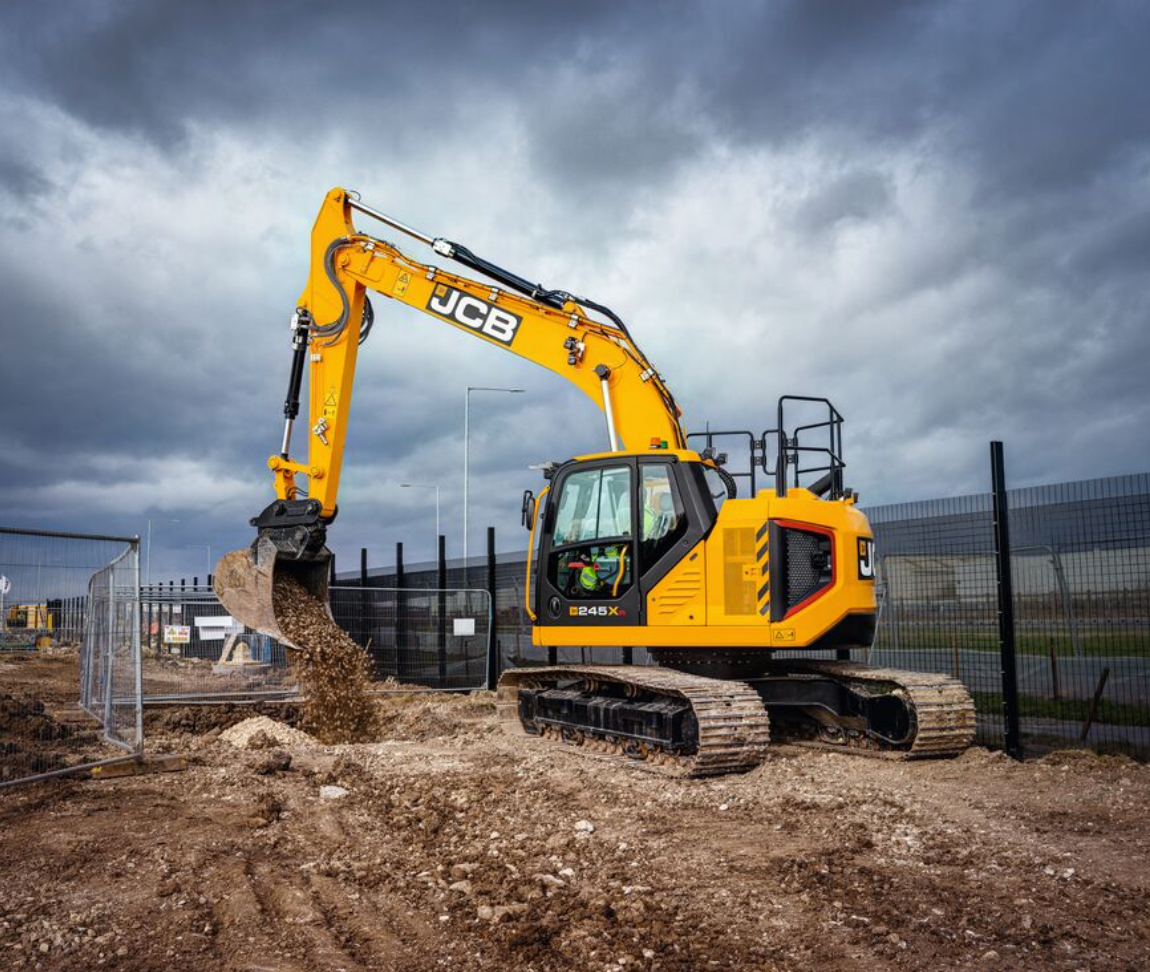
The JCB 245XR excavator’s dig reach with the mono boom is 31 feet and dig depth is 22 feet.JCBThe new excavator – along with all of the five other models in the X Series – gets a new JCB Stage V engine. Stage V is the new European emissions standard. The 245XR runs on a 172-horsepower JCB 448 diesel engine. Stage V and Tier 4 Finals emissions standards are achieved by selective catalytic reduction, diesel particulate filter and diesel oxidation catalyst.
Burnhope says the new engine does not require exhaust gas recirculation. He also says the new engine burns cleaner than the former diesel engine on the 220X, but delivers the same amount of torque of 708 foot-pounds. It also consumes 5% less fuel than the former Tier 4 motor, he says.
The engines now also feature auto-stop and auto-idle as standard to reduce fuel consumption and emissions when not in use.
JCB designed the excavator’s hydraulics for precise, smooth movement. The system features the latest Kawasaki pumps and Kayaba main control valve. The diameter of the hydraulic hose has been increased to improve hydraulic flow for increased performance and efficiency, Burnhope says.

JCB kept the same Command Plus cab on its other five X Series excavators on the reduced-tailswing 245XR.JCBThe full-size Command Plus cab is equipped with a variety of seat choices, including one with built-in heating and cooling and electric lumbar support. Standard cab features include rear and side cameras, heating and air, and Bluetooth integrated into the 7-inch control screen. The cab has double cushion viscous mounts to reduce vibration, and interior noise to 69 decibels. The joystick and switch controls are mounted to the seat and move with the operator.
JCB also placed the 245XR’s main service points in one ground-level compartment that is accessed by a large swing door. The company increased service intervals to 2,000 hours for air and hydraulic filters, and to 500 hours for engine oil.
Quick Specs
Max bucket capacity – 1.63 cubic yardsMax operating weight – 60,184 poundsHorsepower – 172Tail swing – 5 feet 8 inchesTravel speed – 1.99 to 3.54 mphMax digging reach (mono boom) – 32 feet 1 inchMax digging depth (mono boom) – 21 feet 9 inches
Vanair Debuts EPEQ Battery-Powered Truck-Mounted Compressor Line
Vanair unveiled its new electric battery-powered product line for its truck-mounted air compressors and other equipment at this year’s Utility Expo in Louisville, Kentucky.
The new EPEQ equipment allows you to turn off the truck’s engine while running tools and equipment, releasing no emissions from the power source. Prior to the EPEQ debut, Vanair’s products have been PTO-driven off the truck’s chassis, hydraulic driven or they had their own combustion engine.
The heart of the Electrified Power System is the company’s new ELiMent lithium-ion phosphate battery. The system can be mounted on or within combustion-engine vehicles, electric vehicles and trailers.
Along with zero emissions, the EPEQ system reduces noise, heat and weight, while also reducing maintenance and overall vehicle costs, the company says.
The ELiMent battery system can discharge power at the same time it is being charged. ELiMent batteries can power electric-motor driven air compressors, electric-hydraulic power, AC power inverters, welders and electric-driven above-deck air compressors, among other devices.
The 48-volt battery system delivers 5 kilowatts of power. It is designed to be plug and play and mobile, as a 13-inch cube weighing 95 pounds versus a lead-acid battery setup of about 300 pounds and 3 feet. The company says it also plans to soon launch a 48-volt, 7.5-kilowatt version.

The Vanair EPEQ Air20 air compressor is powered by the company’s new battery and doesn’t use the truck’s engine to run.VanairAlong with the new battery system, Vanair displayed its new EPEQ Air20 reciprocating air compressor. The compressor produces 20 cubic feet per minute at 150 psi. It is designed to run such tools as an impact wrench. Vanair says it delivers a 20% efficiency gain for longer battery life.
Vanair also unveiled its EPEQ Air45 air-on-demand rotary screw compressor. It produces 20 to 45 cubic feet per minute for running a 1-inch impact wrench, inflating tires and similar functions.
The company also displayed a truck-mounted above-deck compressor powered by a 300-volt, 30-kilowatt ELiMent battery. The compressor produces 160 CFM at 250 psi.
Other products unveiled at The Utility Expo included:
An EPEQ welder with an integrated battery pack inside it. It weighs 33 pounds. A 48-volt, 5-kilowatt alternator, which allows you to charge the ELiMent battery while the battery is discharging. The alternator can be mounted under the vehicle.An EPEQ 3,000-watt inverter that can take a 48-volt input and put out 120 volts on the vehicle.An EPEQ 5,000-watt inverter that is stackable. So if you add two, then it can work like a 10,000-watt inverter and so on.
The company says all of these devices will communicate with its battery management system.
Did you miss our previous article…
https://constructionosa.org/?p=447
APPSC Recruitment 2021 for Assistant Director | 06 Posts | 12-11-2021

APPSC Recruitment 2021 for the post-Assistant Director with 06 Posts vacancies, last date to apply is 12-11-2021
The post APPSC Recruitment 2021 for Assistant Director | 06 Posts | 12-11-2021 appeared first on ConstructionPlacements.
Did you miss our previous article…
https://constructionosa.org/?p=434
Nature and Design: 10 Ways to Bring Nature Indoors

Here are a few ways that you can bring nature indoors, and design a space that would please even mother nature!
The post Nature and Design: 10 Ways to Bring Nature Indoors appeared first on ConstructionPlacements.
Did you miss our previous article…
https://constructionosa.org/?p=428
How to Solve Your Construction Labor Shortage

Still looking for the proverbial easy button to fill your talent pipeline? We hate to break it to you: there isn’t one.
“If you’re in this industry and not being the biggest promoter of it, you’re part of the problem,” says Benjamin Holmgren, president of Buildwitt Jobs. “You’re not going to solve it for the industry. Solve it for you.”
Holmgren was joined by Natasha Sherwood, executive director of the Independent Electrical Contractors Florida West Coast Chapter, and Steve Cona III, president and CEO of the Associated Builders and Contractors Florida Gulf Coast Chapter, in a recent panel discussion led by Autumn Sullivan, director of marketing and experience for Mobilization Funding.
The panel explored the issue of why skilled trade workers are leaving the industry, the impact of culture on recruitment and retention, and what companies can do to increase their talent pipeline.
Recruiting and retaining the next generation
So, can everyone stop blaming millennials already? Continuing to drone on about how millennials lack worth ethic is so 2010. Older millennials, those born in the 1980s, are established and in positions of power in their careers. Where the industry needs to focus its attention is Gen Z and Gen Alpha.
“I don’t believe it’s so much a labor shortage, as a shortage of leaders who know how to lead the next generation,” said Holmgren. “Kids my age want to have a mission to get behind. They want to have a vision. They want to be led, trained and developed.”
The companies that have solved this understand this workforce development crisis is not about millennials. “Taking ownership of solving this for your company is the elixir,” said Holmgren.
Shop class makes its comeback
Getting in front of Gen Z and Gen Alpha starts in school. Trade education in middle school and high school was nearly extinct but is slowly making a comeback. Until there is wider support for the curriculum at a state and district level, getting involved at an individual level is critical.
Construction companies can help through apprenticeships and mentor programs. Contractors involved in mentorship see better hiring success because they already have name recognition with students, panelists said.
“The greatest benefit to our industry would be a solid pipeline out of high school and into the trades,” said Cona. “It has to be a statewide effort in our educational system to promote opportunities in all occupations that don’t necessarily require a four-year degree. The average age of our apprentice is 26-27 years old, and we have to get that lower to 21-22 years old. It can’t be an afterthought.”
Outside of local efforts, Holmgren suggests meeting the younger generation where they are online.
“It’s one thing to put on a trade show or job fair, but what about Instagram? TikTok? One thing you can start doing today is using social media to tell the story of your business and show people what it’s really like to work in your industry. It’s not that you have to make it look cool; the trades are already cool. Come join us – that’s what we need to be telling people.”
Work culture in construction
Taking ownership of the construction recruitment and retention problem also means taking a hard look at company culture. For better or worse, every company has a culture. How that culture has evolved depends on how it is emulated and nurtured daily.
Work culture has been cited as a major factor in many skilled-trade veterans leaving their employer or the industry entirely. While culture is a hot topic in the construction industry, and often framed as something only young people are pushing for, it has a significant impact on retention across the board.
“You can tell that no matter the age of the employee, they are all looking for a culture that has a family atmosphere, opportunities for advancement, flexible hours and good benefits,” said Sherwood. “I just helped a fourth-year apprentice graduate who had an opportunity to go anywhere. He took a job at a company that paid $2 less an hour because it was a good fit. There’s that level of appreciation that is sometimes more important than the dollar bottom line.”
lternative talent pipelines
Beyond young people, there are many other viable talent pools and untapped markets to help fill the skilled-worker pipeline. Correctional institutions, foster care systems and the military are just a few options.
“We’re looking for all sorts of avenues to fill that pipeline, and one of those is folks coming out of corrections,” said Cona. “We’re getting asked by state leaders and politicians to work with them to help develop skills while people are still incarcerated. So whenever they get out, they can get plugged back into society. If you can give people opportunities and jobs when they get out of being incarcerated, their chances of going back are very slim.”
“The military does a great job recruiting kids, with ROTC officers and billboard campaigns,” said Sullivan. “The trades need to be seen as a viable option. You can feed your family, you can travel around the country – there’s a lot of opportunity depending on where you want to go with it.”
Continuing education for retention
While there are required continuing education credits in the construction industry, employers should also consider training that provides employees with a path toward a goal they value, such as moving from apprentice to superintendent.
“In this day and age in this economy, you have to invest in training your workforce. There are no unemployed electricians and plumbers sitting on the sideline,” said Cona. “You have to build your pipeline by investing in people who might not necessarily have the skills that you need at that time. Invest in your employees, train them, put them in apprenticeship programs and maintain it through their lifecycle as an employee.”
An engaged employee is someone who stays with you.
Changing the narrative
While the narrative that construction is a dead-end job is a systemic problem, individual companies can start making strides today to reframe the conversation and illuminate the opportunities.
“This country was built because people learned skills, created things and built things. No one can say this country was built because people went to college. That’s what we need to continue to push,” said Cona. “As parents, as an industry, we need to be better at pushing the narrative that this is a viable option.”
“Don’t people get tired of talking about finding good help?” adds Holmgren. “We know you can’t find good help. Do something.”
“I’m not interested in solving the industry’s labor-shortage challenge, but if there is one person who can take something from this and it lights a spark and they can solve it for them, that’s a win.”
Watch the full webinar here.
Did you miss our previous article…
https://constructionosa.org/?p=412